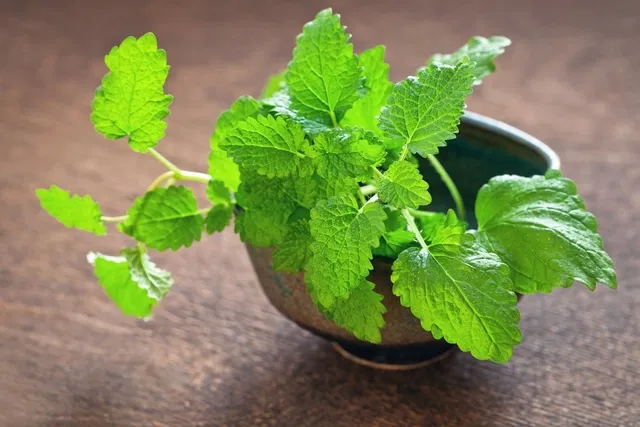Contents
- 1 How to Grow Lemon Balm Indoors (Beginner-Friendly Guide)
- 2 Why Grow Lemon Balm Indoors?
- 3 Choosing the Right Container & Soil
- 4 Light Requirements
- 5 How to Water Lemon Balm
- 6 Temperature and Humidity Tips
- 7 Fertilizing Schedule
- 8 Pruning and Harvesting Lemon Balm
- 9 Common Growing Problems
- 10 Best Companion Plants
- 11 Indoor Uses for Lemon Balm
- 12 FAQs About Growing Lemon Balm Indoors
- 13 Final Thoughts on Growing Lemon Balm Indoors
How to Grow Lemon Balm Indoors (Beginner-Friendly Guide)
Lemon balm (Melissa officinalis) is one of the easiest and most rewarding herbs to grow indoors. With its fresh citrus scent, calming effects, and culinary versatility, it’s a perfect addition to any indoor herb garden. Whether you want to brew a relaxing tea, add a zesty note to your meals, or simply enjoy its fragrance, this guide will show you exactly how to grow lemon balm indoors—no green thumb required.
Why Grow Lemon Balm Indoors?
Aromatic & calming: The lemony scent is known for its stress-relieving properties.
Useful in cooking: Great for teas, salads, desserts, and marinades.
Repels pests: Acts as a natural insect repellent indoors.
Grows well in pots: Perfect for windowsills or kitchen counters.
Fast-growing: You’ll be harvesting in just a few weeks with proper care.
Choosing the Right Container & Soil
Container: Use a pot with drainage holes, at least 6 inches deep. Clay pots are ideal for airflow.
Soil: Choose a well-draining potting mix. You can mix regular indoor potting soil with perlite or sand to improve drainage.
pH range: Lemon balm prefers a slightly acidic to neutral pH (6.0–7.0).
Light Requirements
Lemon balm loves bright, indirect light.
Place it near an east- or south-facing window.
If natural light is limited, use a grow light for 12–14 hours a day.
Need a reliable grow light? Check this one on Amazon (As an Amazon Associate, I earn from qualifying purchases.)
How to Water Lemon Balm
Water when the top inch of soil feels dry.
Avoid overwatering—lemon balm is sensitive to soggy roots.
Empty saucers after watering to prevent root rot.
Use a soil moisture meter to avoid over or under watering.
Temperature and Humidity Tips
Ideal temperature: 18–24°C (65–75°F)
Avoid drafts, radiators, or cold windows.
Lemon balm tolerates average indoor humidity but appreciates an occasional misting during dry winter months.
Fertilizing Schedule
Feed once a month with a diluted liquid fertilizer.
Avoid over-fertilizing, as it may reduce the herb’s aroma.
Pruning and Harvesting Lemon Balm
Start pruning when the plant reaches 6 inches tall.
Snip leaves just above a leaf node to encourage bushier growth.
Harvest regularly to prevent legginess.
Quick Tip: Always use clean scissors to avoid spreading disease between plants.
Common Growing Problems
Leggy stems: Caused by insufficient light. Use grow lights.
Yellowing leaves: Could be overwatering or poor drainage.
Powdery mildew: Improve air circulation and avoid overhead watering.
Best Companion Plants
Lemon balm pairs well indoors with:
Mint (separate pots to prevent spread)
Thyme
Oregano
Chamomile
These herbs share similar light and watering needs.
Indoor Uses for Lemon Balm
Tea: Steep fresh leaves in hot water for a calming drink.
Cooking: Add to salads, fruit dishes, or fish.
Skincare: Use in homemade lotions or infused oils.
Aromatherapy: Crush leaves for an instant mood boost.
FAQs About Growing Lemon Balm Indoors
Q: Can I grow lemon balm from cuttings?
A: Yes! Place stem cuttings in water until roots form, then transplant.
Q: How long does lemon balm live indoors?
A: With regular pruning and care, it can thrive for several years.
Q: Does lemon balm need full sun indoors?
A: It prefers bright light, but indirect sun or a grow light works perfectly.
Final Thoughts on Growing Lemon Balm Indoors
Lemon balm is a resilient and rewarding herb that even beginners can enjoy. With a little light, good drainage, and consistent trimming, you’ll have a fragrant, lush plant that keeps giving all year round. From boosting your mood to enhancing your meals, this herb is a must-have for any indoor garden. Add it to your sunny windowsill and enjoy the rewards in just a few weeks.
Need more herbal inspiration? Check out our guide on how to grow mint indoors to expand your herbal kitchen garden.
Outbound Link
For more lemon balm growing tips, visit Gardening Know How

